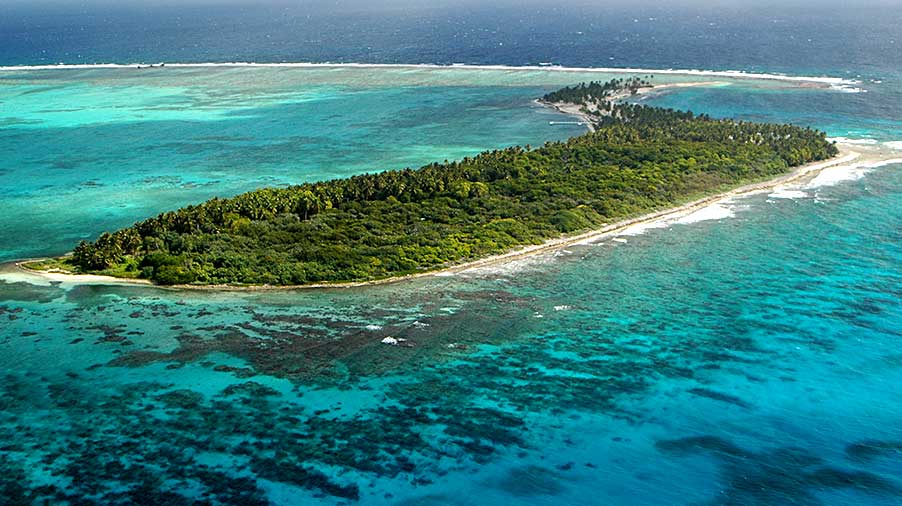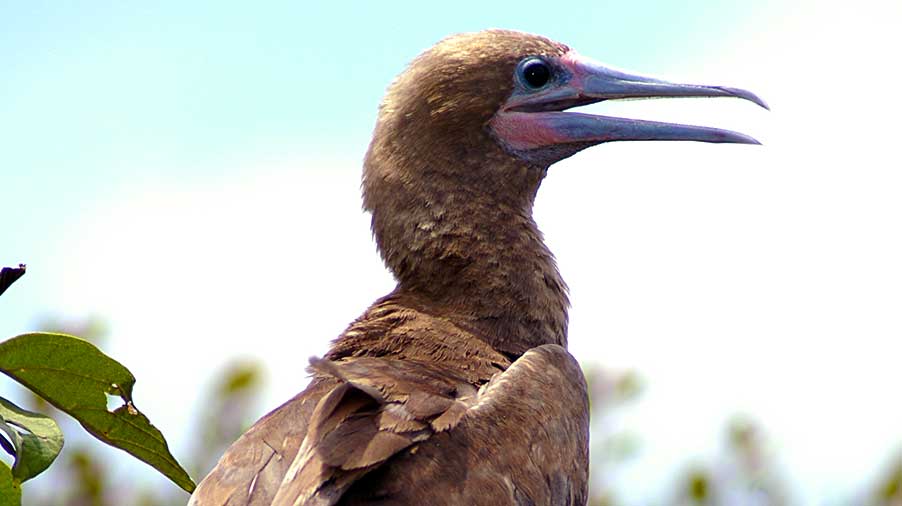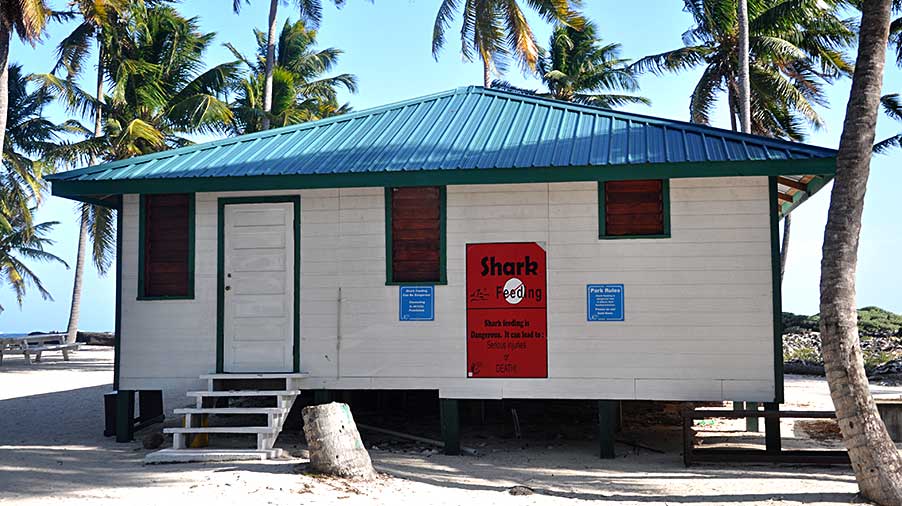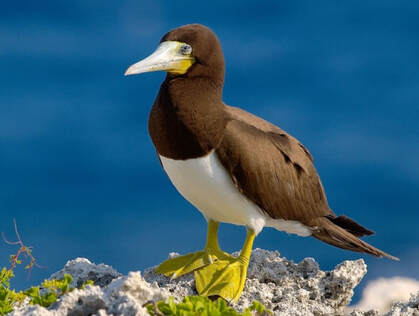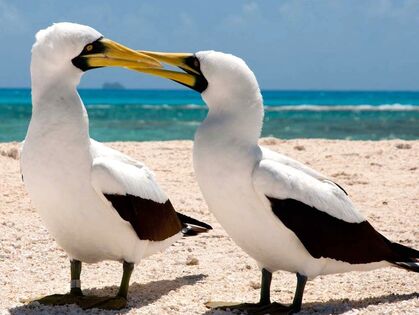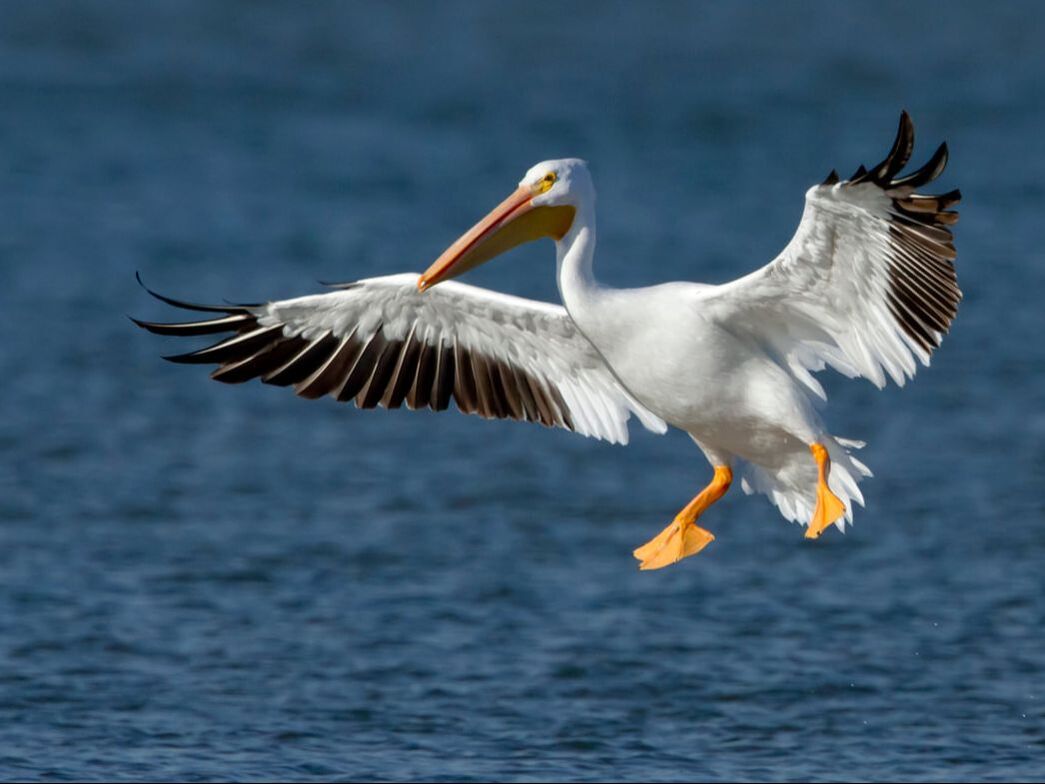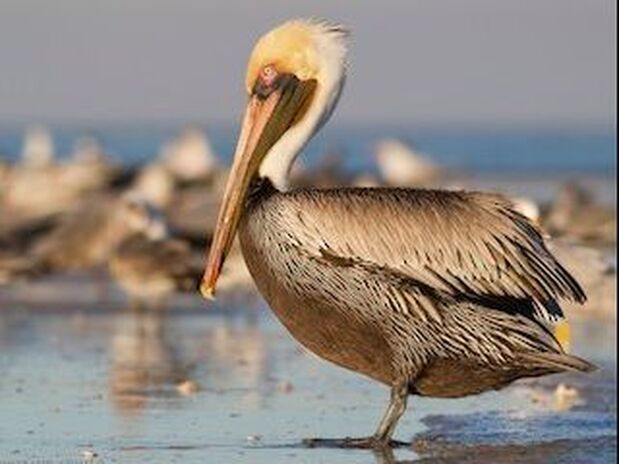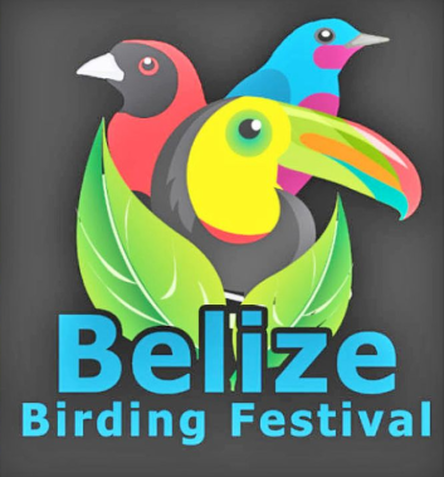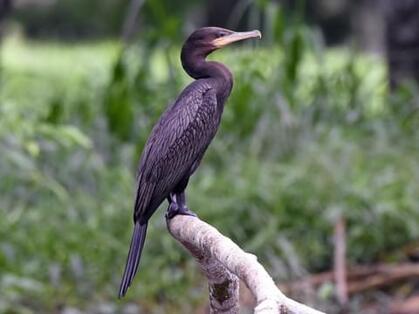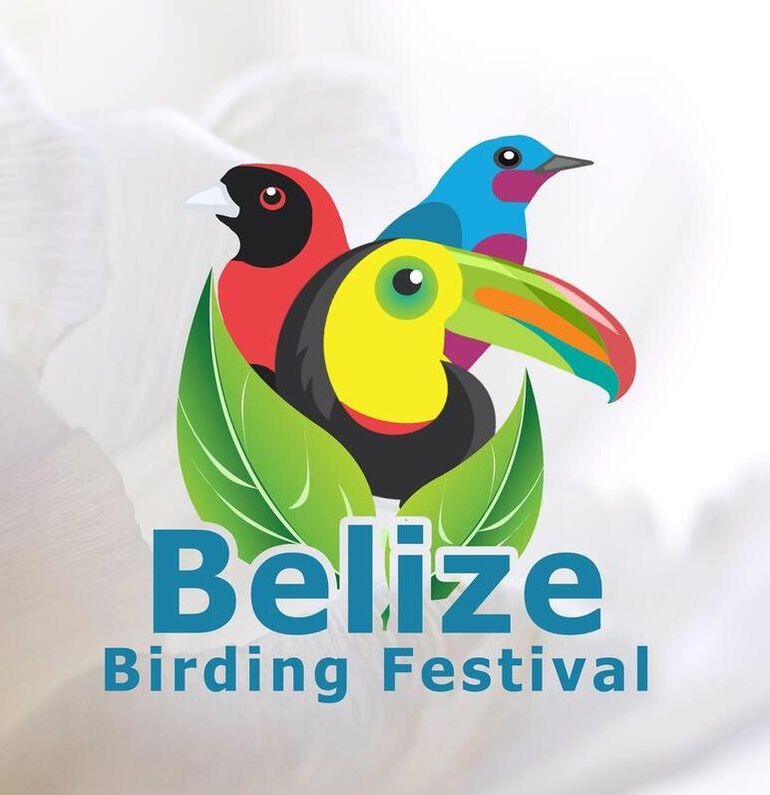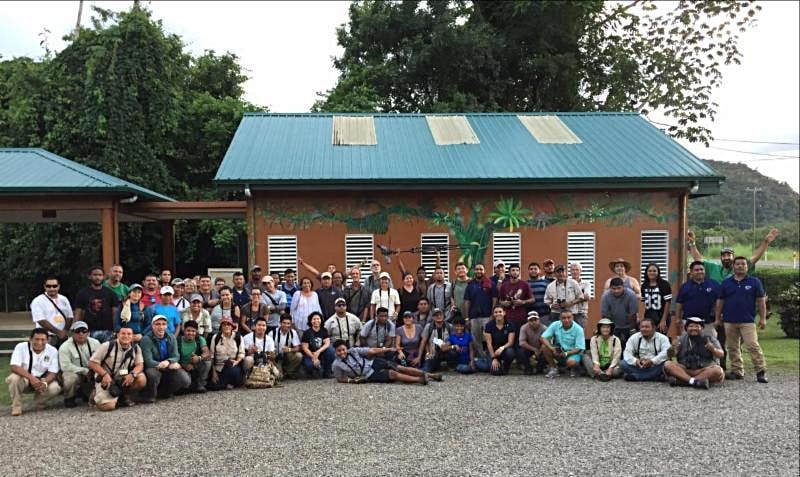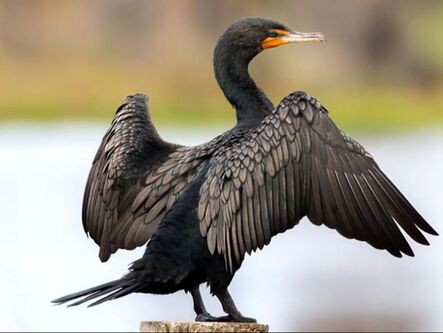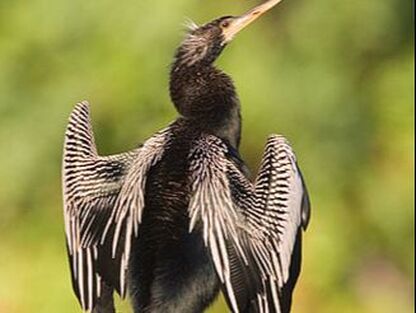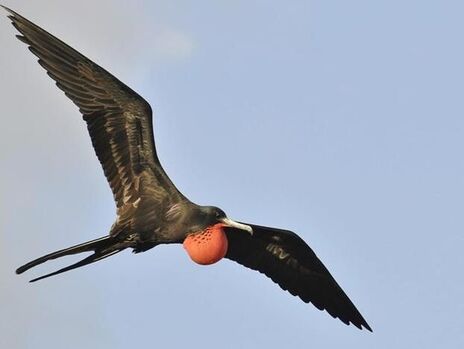Boobies, Pelicans & Cormorants
Boobie Birds
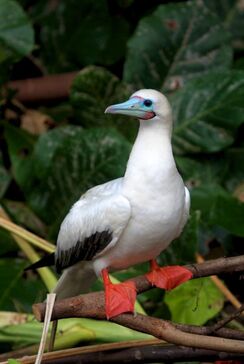 Red-Footed Booby
Red-Footed Booby
RED FOOTED BOOBY
Found only on Half Moon Caye. The smallest of the boobies. In 1928, part of Half Moon Caye was reserved by the crown, as a bird sanctuary under the Crown Land Ordinance to protect the habitat of the Red-footed Booby. It is Belize’s oldest site designated for protection of wildlife.
The Half Moon Caye colony is made up of about 4,000 birds nests, amidst Orange-flowered Ziricote trees. Red-footed Boobies prefer Orange-flowered Ziricote trees for nest building and raising chicks. In return, the booby colony supports the forest’s stability by providing guano as fertilizer. This beautiful relationship will endure for many years to come if left relatively undisturbed.
On Half Moon Caye, the bird population is almost entirely made up of white-colored birds with black on the railing edge of their wings. The Red-footed Booby, unlike other seabirds, displays a variety of color morphs. Elsewhere they are dull brown. Look carefully, somewhere in the crowd you may see a white-tailed brown morph or a Red-footed Booby that is entirely brown. Despite plumage differences, all adults have the characteristic red feet.
The Red-footed Booby and Magnificent Frigatebird share a unique relationship, they have both reside together peacefully in nesting colonies on land. Conflicts occur over the open sea, when the Magnificent Frigatedbird chases and attacks the Red Footed Booby Bird to give up its food. The Red-footed Booby has learned to dive, catch its food and swollow it almost immediately before the Magnificent Frigatebird has a chance to steal it from them. This behavior of stealing food is called kleptoparasitism.
BELIZE HABITAT - Nests in trees and shrubs on islands; forages over open ocean, usually beyond sight of land.
Where can I find this bird in Belize?
Large nesting colony on Half Moon Caye, Lighthouse Reef. Reported occasionally on north cayes ad once at Belize City, usually following tropical storms.
INTERESTING BIRD FACTS
Found only on Half Moon Caye. The smallest of the boobies. In 1928, part of Half Moon Caye was reserved by the crown, as a bird sanctuary under the Crown Land Ordinance to protect the habitat of the Red-footed Booby. It is Belize’s oldest site designated for protection of wildlife.
The Half Moon Caye colony is made up of about 4,000 birds nests, amidst Orange-flowered Ziricote trees. Red-footed Boobies prefer Orange-flowered Ziricote trees for nest building and raising chicks. In return, the booby colony supports the forest’s stability by providing guano as fertilizer. This beautiful relationship will endure for many years to come if left relatively undisturbed.
On Half Moon Caye, the bird population is almost entirely made up of white-colored birds with black on the railing edge of their wings. The Red-footed Booby, unlike other seabirds, displays a variety of color morphs. Elsewhere they are dull brown. Look carefully, somewhere in the crowd you may see a white-tailed brown morph or a Red-footed Booby that is entirely brown. Despite plumage differences, all adults have the characteristic red feet.
The Red-footed Booby and Magnificent Frigatebird share a unique relationship, they have both reside together peacefully in nesting colonies on land. Conflicts occur over the open sea, when the Magnificent Frigatedbird chases and attacks the Red Footed Booby Bird to give up its food. The Red-footed Booby has learned to dive, catch its food and swollow it almost immediately before the Magnificent Frigatebird has a chance to steal it from them. This behavior of stealing food is called kleptoparasitism.
BELIZE HABITAT - Nests in trees and shrubs on islands; forages over open ocean, usually beyond sight of land.
Where can I find this bird in Belize?
Large nesting colony on Half Moon Caye, Lighthouse Reef. Reported occasionally on north cayes ad once at Belize City, usually following tropical storms.
INTERESTING BIRD FACTS
- Like all boobies, the Red-footed Booby never carries its prey in its beak. Instead, it always swallows it before flying.
- The Red-footed Booby comes in a confusing array of color morphs, ranging from individuals that are all white except for blackish on the wing, to individuals that are entirely dark brown. Some birds fail to fit neatly into any of the typical color morph categories, and many variations exist. Color morphs do not segregate reproductively or geographically; individuals representing several morphs breed in a single colony.
- The oldest recorded Red-footed Booby was at least 22 years, 11 months old.
Half Moon Caye - Lighthouse Reef Atoll
The Half Moon Caye Natural Monument (HMCNM) is located at the southeast corner of Lighthouse Reef Atoll. Lighthouse Reef Atoll is the furthest of Belize’s three atolls from the mainland, and one of only four such atolls in the Western Hemisphere. The atoll is an asymmetric rimmed platform, entirely surrounded by a fringing reef rising to the surface. Inside this fringing reef is a lagoon speckled with hundreds of coral patches which is known for its high density and diversity of corals and fishes.
Brown Booby Bird
Brown Booby Bird - Found in and around the ocean areas of Belize, the Brown Booby is a dashing seabird—both in plumage, a natty brown-and-white (with bright yellow feet) and in flight style, which involves swift aerial maneuvers and deft dives. Like most seabirds that nest on islands, Brown Boobies are very vulnerable to introduced predators such as rats, mice, and cats.
BELIZE HABITAT - Nests on ground on offshore islands; forages at sea both outside and inside the reef; roosts in mangroves on small cayes. Where can I find this bird in Belize? Fairly common year round visitor offshore and among smaller cayes; sick or injured birds occasionally seen along mainland coast. No credible evidence of nesting. INTERESTING BIRD FACTS
|
Masked Booby Bird
Masked Booby Bird - A large seabird of tropical oceans, common to the ocean areas of Belize. It is mostly encountered at sea in the Gulf of Mexico & southern Atlantic states.
BELIZE HABITAT - Open ocean; healthy birds rarely found near shore. Where can I find this bird in Belize? Regular visitor; recorded February, May, August, and December, twice off Ambergris Caye, once off Belize City, and once near Glovers Reef. Interesting Facts
|
PELICANS
Very large with immense bill, webbed feet & large pouch.
Very large with immense bill, webbed feet & large pouch.
American White Pelican
American White Pelican - One of the largest birds in Belize, the American White Pelican is majestic in the air. The birds soar with incredible steadiness on broad, white-and-black wings. Their large heads and huge, heavy bills give them a prehistoric look. On the water they dip their pouched bills to scoop up fish, or tip-up like an oversized dabbling duck. Sometimes, groups of pelicans work together to herd fish into the shallows for easy feeding. Look for them on inland lakes in summer and near coastlines in winter.
BELIZE HABITAT - Estuaries, lagoons, shrimp farms; occasionally reservoirs, ocean. Where can I find this bird in Belize? Other than a sight record in 1902, not recorded until 1981. Numbers have increased steadily in past 20 years; now uncommon to locally common winter visitor in October to May, primarily north of Belize City (i.e. Crooked Tree and Nova Shrimp Farm in Belize), occasionally south along coast to north Toledo;once inland at Blue Creek Orange Walk, and once on Ambergris Caye. Interesting Facts
|
Brown Pelican
Brown Pelican - The Brown Pelican is a comically elegant bird with an oversized bill, sinuous neck, and big, dark body. Squadrons glide above the surf along southern and western coasts, rising and falling in a graceful echo of the waves. They feed by plunge-diving from high up, using the force of impact to stun small fish before scooping them up. They are fairly common today—an excellent example of a species’ recovery from pesticide pollution that once placed them at the brink of extinction.
BELIZE HABITAT - Coastlines, inshore and offshore waters, offshore islands; less common in estuaries and shrimp farms, rarely inshore lagoons and ponds. Nests in colonies in mangroves. Where can I find this bird in Belize? Nests on several cayes. Common year round visitor on cayes and along mainland coast; occasionally inland, at Crooked Tree in Belize. Interesting Facts
|
Cormorants
Medium sized body, gular pouch, long neck, webbed feet. Fly with outstretched slightly crinkled neck;
frequently glide for short periods in steady flight but do not soar.
frequently glide for short periods in steady flight but do not soar.
Neotropic Cormorant
Neotropic Cormorant - A bird of the tropical waterways of Central and South America, the Neotropic Cormorant reaches the upper limits of its range in Texas and occasionally, the Great Plains. Although it superficially resembles North America's other freshwater cormorant, the Double-crested Cormorant, the Neotropic Cormorant stands apart in various aspects of behavior, as well as range.
BELIZE HABITAT - Lagoons, estuaries, shrimp farms, rice fields, coastline and inner cayes (especially in south). Nests in colonies in trees. Where can I find this bird in Belize? Common resident on mainland and lagoon side of Ambergris Caye; occasionally on other inner cayes; unrecorded from outer cayes. Large numbers congregate at Crooked Tree Belize. INTERESTING BIRD FACTS
|
Double-Crested Cormorant
Double Crested Cormorant - The gangly Double-crested Cormorant is a prehistoric-looking, matte-black fishing bird with yellow-orange facial skin. Though they look like a combination of a goose and a loon, they are relatives of frigatebirds and boobies and are a common sight around fresh and salt water across North America—perhaps attracting the most attention when they stand on docks, rocky islands, and channel markers, their wings spread out to dry. These solid, heavy-boned birds are experts at diving to catch small fish.
BELIZE HABITAT - Mangroves, coastline and nearshore waters of cayes, harbors and coastal beaches along north mainland coast; occasionally shrimp farms. Nests in small colonies in mangroves and littoral forests. Where can I find this bird in Belize? Resident on small cayes west of Ambergris Caye and off Belize City; fairly common to common year round visitor on cayes south to Sapodillas and along mainland coast south to north of Toledo. Occasionally inland at Crooked Tree Belize and New River in Orange Walk. Numbers have increased significantly in past 20 years (noted as unusual as recently as 1982). INTERESTING BIRD FACTS
|

